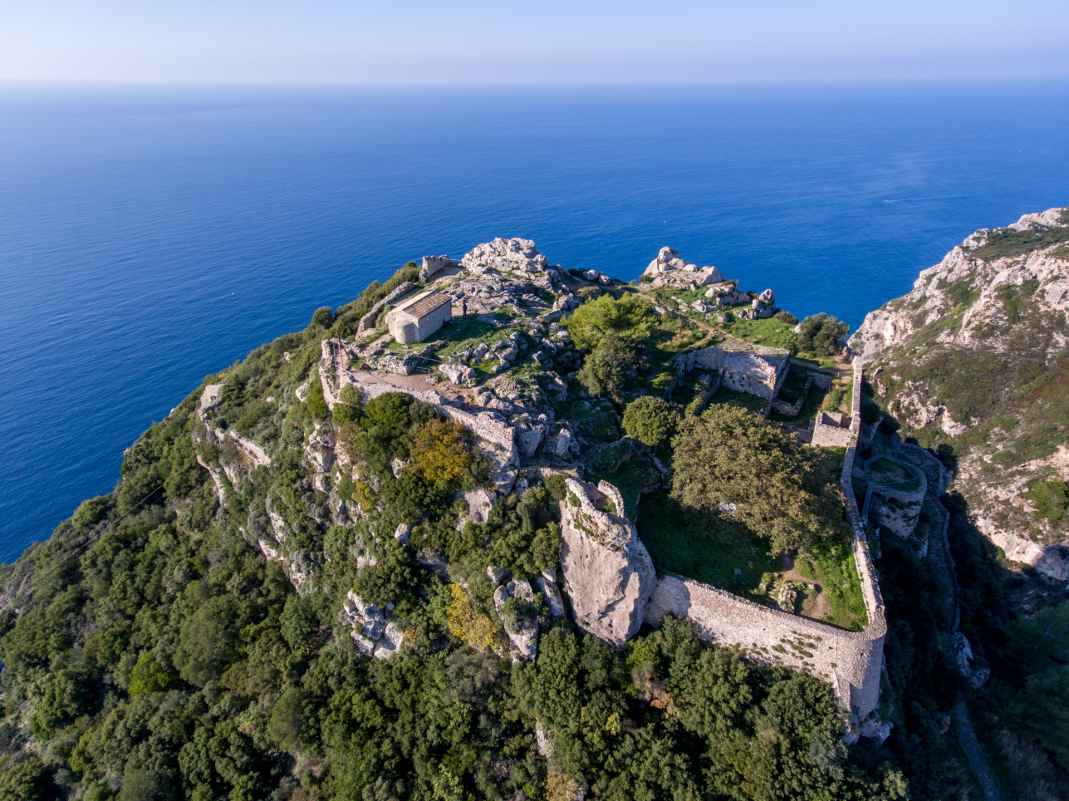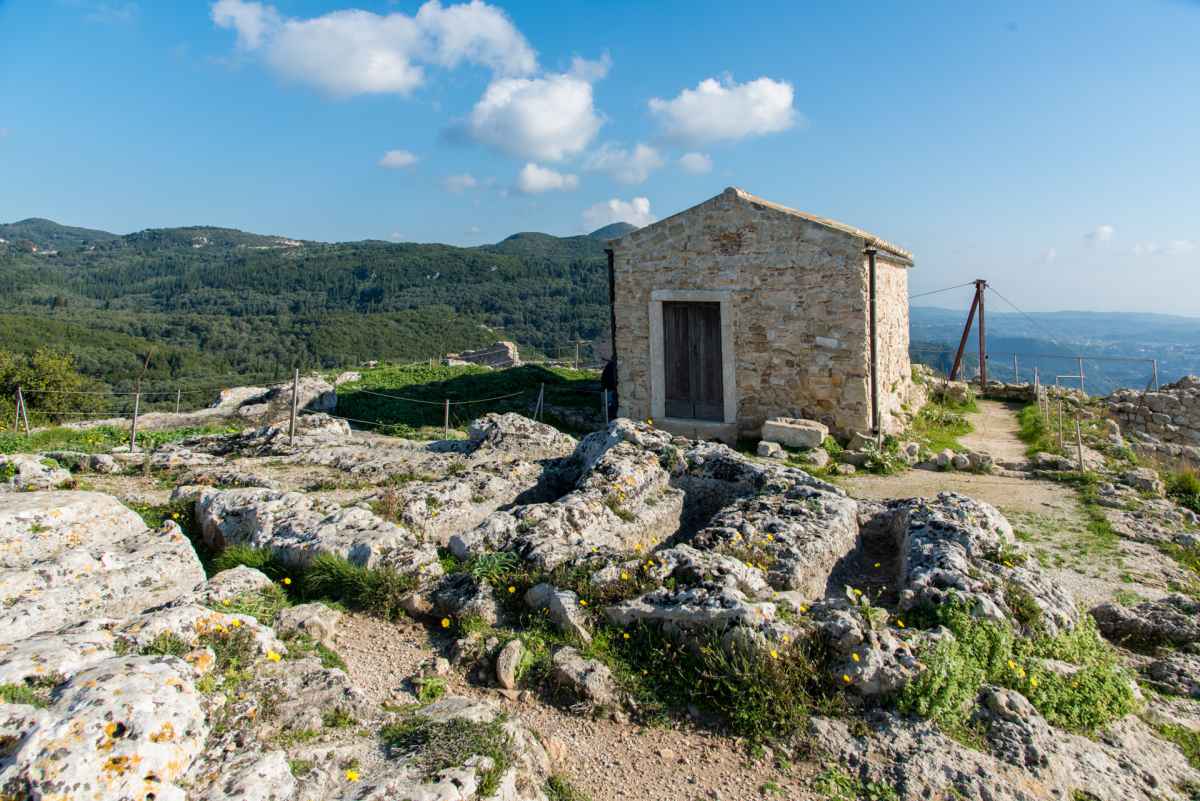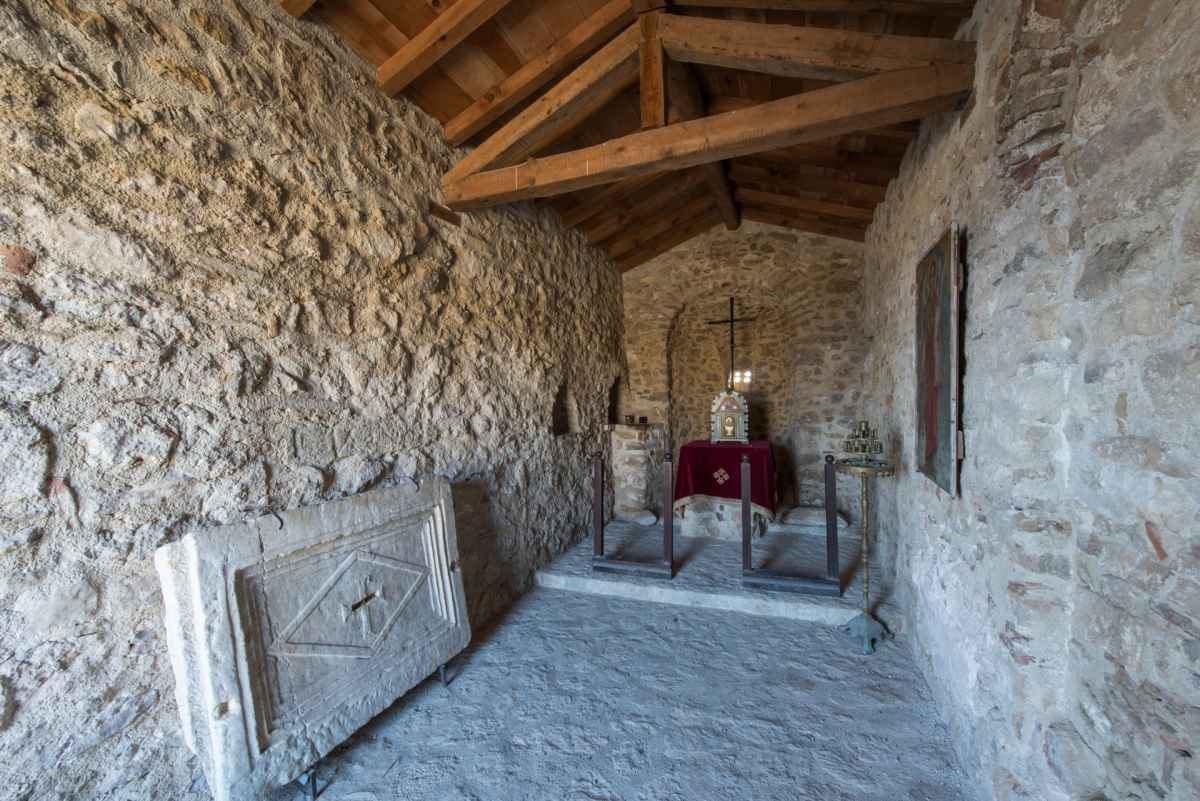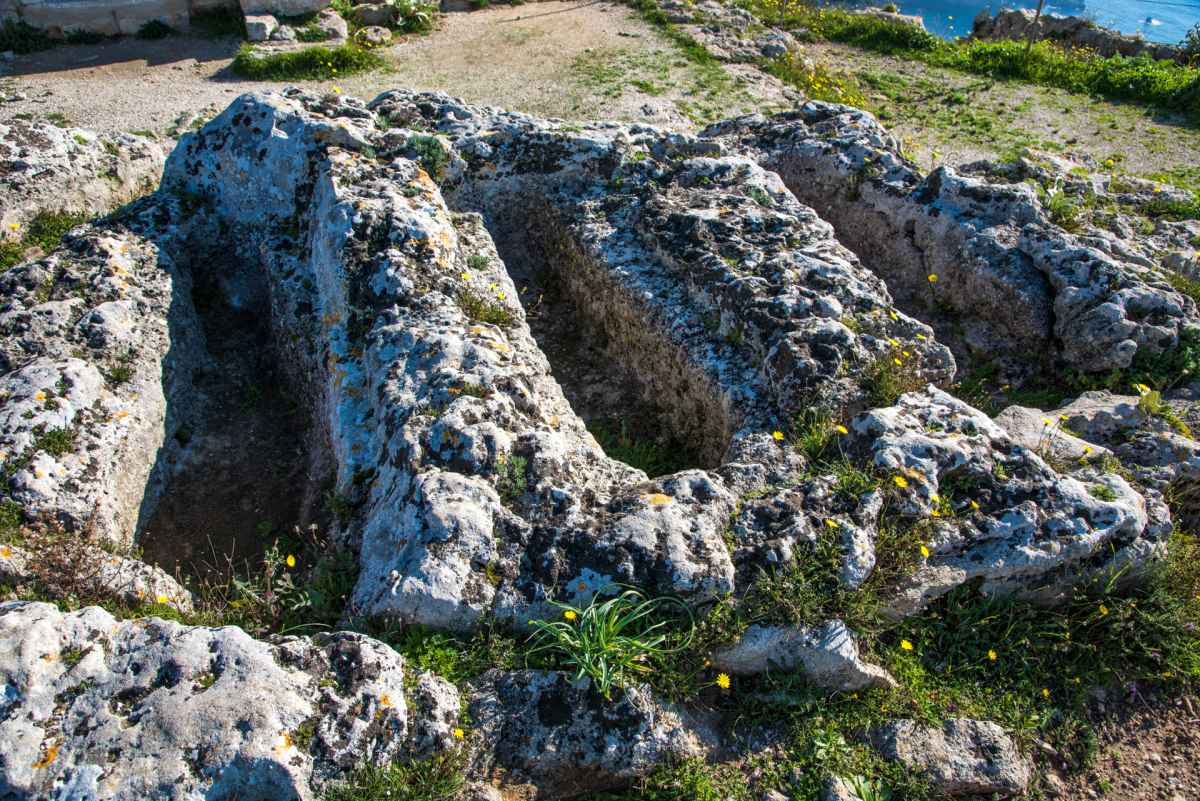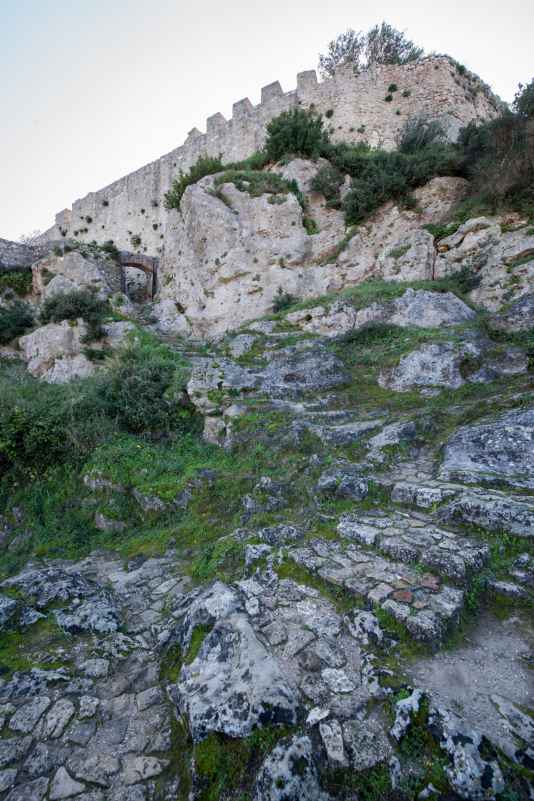The castle of Aggelokastro on the western coast of Northern Corfu is one of the three Byzantine castles of the island. It is built on a steep rock. The rock is surrounded by a steep perimetric wall, often built at the edge of the cliff. During Venetian rule, Aggelokastro played an important role in deterring the Ottoman raids. The significance of this fortress decreased after 1550 when the Old and New Fortresses of Corfu prospered. In the 19th century it was finally abandoned.
One of the major turning points in the history of the castle is its occupation by the Anjou in 1272. During Anjou rule and for some time, Aggelokastro was the capital of the island, since it was the place of the governor’s residence.
At later times, and all through the Venetian rule, the fortress kept the residents of Corfu safe from aspiring Ottoman and Genovese conquerors and most importantly supervised marine traffic in the Adriatic Sea. Aggelokastro played an important role during the Ottoman attacks of the 16th century. After 1550, this Byzantine castle lost its prestige as a fortress. This is the time that the Old and New Fortresses of Corfu began to prosper. In the 19th century, Aggelokastro is deemed useless and deserted.
The mound of Aggelokastro is surrounded by a low wall on the north and east side. At the top of the mound there is the citadel, which can be accessed through gates, the central northern gate that is protected by a round tower and the small gate in the south. Opposite the main gate, one can find the ruins of the guard residences, while three cisterns ensured the castle’s water supply. At the highest point of the citadel the Taxiarchon temple still stands. The temple was built during the late Byzantine or early post-Byzantine period on the remains of an older triple-naved basilica.
Video
Virtual Tour
3D Reconstruction


